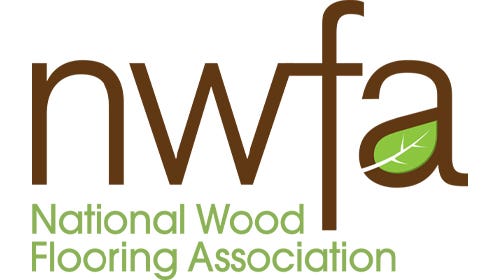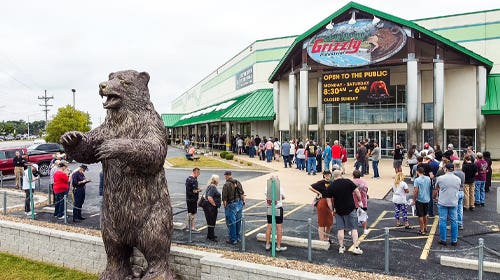Composite veneer becoming more common
Low cost, ‘green’ factor and larger sheet size are attracting new buyers Have you ever heard of reconstituted veneer, recon veneer or composite veneer? Chances are many of you haven’t,…
Low cost, 'green' factor and larger sheet size are attracting new buyers
Have you ever heard of reconstituted veneer, recon veneer or composite veneer? Chances are many of you haven't, but you will likely recognize one of the terms in the near future. More than 30 years ago, Alpi, an Italian wood products company, developed a complicated process that uses two sustainable woods — Italian poplar and obeche — to manufacture a 90 percent wood veneer product whose colors and grain can be manipulated at will.
Logs of Italian poplar (Populus spp.) from Italy and obeche (Triplochiton scleroxylon) from Cameroon are rotary sliced and individually placed in vats that contain dyes. Once the sheets are removed from the vats and dried, the veneer is colored throughout its thickness.
"A computer-automated process mixes those veneers from different colored vats in a very regimented order," says Randy Michaels, president of Greenline Products of Beaufort, S.C., and Stouffville, Ontario. Greenline has been selling recon veneer for more than 30 years and currently uses IPIR material, which is also manufactured in Italy. "So you may have [sheets of] brown, darker brown, red, darker red, dark brown, black — it's a regimented order, and before mixing those in that order, every time it pulls a sheet, it sticks a sheet of colored glue in between the next sheet of veneer that is put on top. When you press that together, how you press that [with the glues] will determine the grain structure.
"Then you start to slice it by cutting through the wood and glue-ups. When you cut through the wood perpendicular — or at 50 or 75 degrees — you change grain structure ever so slightly. When you have that finished product in your hand, that colored product that you see is the actual different layers of wood that have been glued together. Grain structure has nothing to do with the grain of the wood; that is the colored glue that you used. So the glue creates the grain and different dyed woods create the overall color."
The advantages of reconstituted veneer include being environmentally friendly, having the ability to create sheets larger in size than the actual tree can provide, and producing a material at a substantially lower cost compared to regular veneer.
Brookside Veneers in Cranbury, N.J., has been importing Alpi recon veneer — the company prefers to call it composite veneer — for more than 30 years and is the largest importer of the material in the country. During the last three decades, Brookside's management has seen a number of changes in the composite veneer market.
"Certainly it sells in lot bigger quantities now than it did when we first started bringing it in," says David Thomsson, president of Brookside. "There's a much wider acceptance in the market. The reason we got into it was for office furniture. In the '70s, all of the office guys wanted to use rift white oak and they couldn't get enough good consistent rift white oak to make office furniture. With office furniture, you're making 200 wide panels at a time and you want them all to match up when you're done. They just couldn't do it with natural rift white oak because there was too much variation in the veneer. So we started selling the recon instead. It caught on first in office furniture and over the years we have been able to expand it into a lot of different markets.
"I would say the custom cabinetry sector is at least our second-biggest market and maybe at times it is our biggest market. It's always hard to say exactly because that market gets sold largely through distribution, and we're selling to our distributors. Certainly custom is a very strong market."
Another product benefit is the ability to produce recon veneer without using wood from the specific species you are duplicating, often a rare exotic. Plus, the manufacturer is able to produce widths and lengths of veneer that can't be matched by the real trees.
"That's the real advantage of it — the beauty of the real wood with the ease of a laminate — because you can get a 4x8 size and get 200 sheets, and you're going to have a consistency that you're not going to find in a natural veneer," says Jeff Schaefer of Treefrog, a metal and wood products company in Easthampton, Mass. "We sell it prefinished with a laminate backer for custom stuff. We get stuff without a backer, but it is tougher to handle. This spring we launched Treefrog unfinished in paper back. We got requests for that, people want to use it for more stuff, whether it be furniture or something like that. They can stain it and also with a paper back, you can wrap it around stuff."
The number of dealers selling recon veneer is increasing. Certainly Wood of East Aurora, N.Y., known in the industry for the last 25 years for its wide selection of premium veneers, is giving recon veneer a serious look.
"We are selling the Macassar ebony as the primary and only one at this point because there is a huge demand for Macassar," says Greg Engle, sales manager at Certainly Wood. "I guess as to how well it is received is that [customers] love the price, which might be 25 percent of the cost compared to the natural Macassar. And especially working with sheet sizes compared to natural Macassar, too, is a plus because they are getting uniform sheet size widths of 26" wide and in some cases up to 4'. We maintain only the 26" wide width, compared to natural Macassar which is typically 3-1/2" to 4-1/2" wide."
"We use it different ways," says Peter Rodgers, president of Oakwood Veneer Co. in Troy, Mich. "This is designed for people who don't want any knots; they want it all sequenced, kind of like Formica. It's kind of halfway between Formica and plywood or wood. It has the best of both things. It's designed for people who want perfection."
There are a large number of wood species available and some are naturally more popular than others. Current hot species include zebrawood, Macassar ebony, East Indian rosewood, zebrano, quartered cherry, quartered maple, quartered walnut, quilted maple, rift white oak, wenge and bird's-eye maple.
"Pricing can be quite attractive," Rodgers says. "In some cases it can be a little more, but in most cases it's less. It varies depending on the patterns. Sometimes it turns out great. We do some rift white oak that is just incredible. We sell about 10 percent to do-it-yourselfers and all the rest is woodworkers and some architects who spec it."
The consensus of recon dealers is that the product will continue to catch on in the United States. The reason all recon veneer is imported is because there are no sustainable species in the United States to sufficiently support supplies needed to manufacture the product here.







